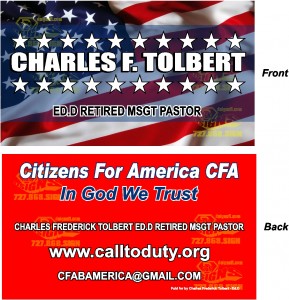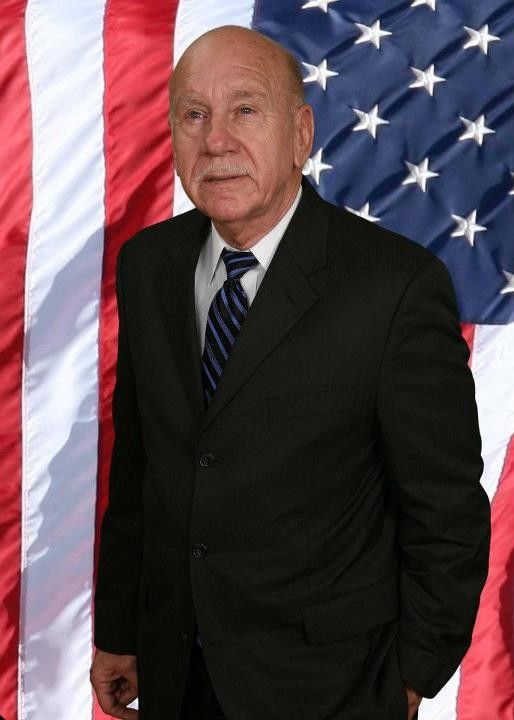Generally, the word “God” will appear in two places in most constitutions. The first place is in the preamble to the constitution. The second place is in the religion clauses in the bill of rights. For example, the word “God” appears in the preamble in eight state constitutions. In four states, the “Supreme Ruler of the Universe” is used instead. By far, the most popular divine reference in a preamble is “Almighty God.” This appears in the preamble of 30 state constitutions. In some states, the state constitution does not have a preamble. However, a divine reference can be found in the religion clauses in the bill of rights in each instance. There is only one state constitution which has a preamble that does not have a divine reference of any kind. This is the Constitution of Oregon. But here the words “Almighty God” appear in the state religion clauses.
(1) The freedom to practice religion and to express religious thought is acknowledged to be one of the fundamental and unalienable rights belonging to all individuals.
(2) The Framers of the Constitution deliberately withheld, in the main body of that document, any authority for the Federal Government to meddle with the religious affairs or with the free speech of the people. Then, as further and more specific protection for the people, they added the first amendment, which includes the `establishment clause’ and the `freedom of speech clause’ which are as follows: `Congress shall make no law respecting an establishment of religion or prohibiting the free exercise thereof; or abridging the freedom of speech . . .’. It is of utmost importance to note that the first amendment is not a grant of authority to the Federal Government. To the contrary, it is a specific restriction upon the exercise of power by the Federal Government.
(3) For over 150 years, the Court held to this historically correct position in interpreting the first amendment. During this period, scant mention was made to `The Separation of Church and State’.
(4) Then, beginning in 1947, and accelerating through the 60’s, the Court abruptly reversed its position. This was done with no change in the law, either by statute or by amendment to the Constitution. The Court invented the distorted meaning of the first amendment utilizing the separation of `church and state’ in 1947 in Everson v. Board of Education when it announced: The First Amendment has erected a wall between church and state. That wall must be kept high and impregnable. We could not approve the slightest breach. (Everson v. Board of Education; 330 U.S. 1, 18 [1947]). Over the past five decades, rulings of the United States Supreme Court have served to infringe upon the rights of Americans to enjoy freedom of speech relating to religious matters. Such infringements include the outlawing of prayer in schools and of the display of the Ten Commandments in public places. These rulings have not reflected a neutrality toward religious denominations but a hostility toward religious thought. They have served to undermine the foundation of not only our moral code but our system of law and justice.
(5) In making this abrupt change, the Court ignored all historical precedent established previously by the Court, the wording of the First Amendment, and the intent of its framers. The rulings are legally irrational and without foundation. Although the Court presumed to rely upon the First Amendment for its authority for these rulings, a review of that Amendment reveals that said rulings could not possibly have been based upon its original intent. Consequently, it is incumbent upon this Congress to review not only the rulings of the Court which are in question but the wording and history of the First Amendment to determine the intent of its framers. This abrupt change is found in the following court cases:
(A) `A verbal prayer offered in a school is unconstitutional, even if that prayer is both voluntary and denominationally neutral.’ (Engel v. Vitale, 1962, Abington v. Schempp, 1963, Commissioner of Education v. School Committee of Leyden, 1971.)
(B) `Freedoms of speech and press are guaranteed to students and teachers unless the topic is religious, at which time such speech becomes unconstitutional.’ (Stein v. Oshinsky, 1965, Collins v. Chandler Unified School District, 1981, Bishop v. Aronov, 1991, Duran v. Nitsche, 1991.)
(C) `It is unconstitutional for students to see the Ten Commandments since they might read, meditate upon, respect, or obey them.’ (Stone v. Graham, 1980, Ring v. Grand Forks Public School District, 1980, Lanner v. Wimmer, 1981.)
(D) `If a student prays over his lunch, it is unconstitutional for him to pray aloud.’ (Reed v. Van Hoven, 1965.)
(E) `The Ten Commandments, despite the fact that they are the basis of civil law and are depicted in engraved stone in the United States Supreme Court, may not be displayed at a public courthouse.’ (Harvey v. Cobb County, 1993.)
(F) `When a student addresses an assembly of his peers, he effectively becomes a government representative; it is therefore unconstitutional for that student to engage in prayer.’ (Harris v. Joint School District, 1994.)
(G) By interpreting the establishment clause to preclude prayer and other religious speech in any public place, the Supreme Court necessarily violates the free speech clause of the very same first amendment.
These rulings of the Court constitute de facto legislation or Constitution-amending. This is a serious violation of the doctrine of separation of powers, as all legislative authority bestowed by the people through the Constitution is bestowed upon the Congress and the Congress alone.
(6) A fundamental maxim of law is, whenever the intent of a statute or a constitution is in question, to refer to the words of its framers to determine their intent and use this intent as the true intent of the law.
(7) The intent of the First Amendment was and is clear on these two points: The Federal Government was prohibited from enacting any laws which would favor one religious denomination over another and the Federal Government has no power to forbid or prohibit any mention of religion, the Ten Commandments or reference to God in civic dialog.
(8) In its rulings to prohibit Americans from saying prayers in school or from displaying the Ten Commandments in public places, the Court has relied heavily upon the metaphor, `Separation of Church and State’. Note that this phrase is nowhere to be found in the First Amendment or any other place in the Constitution.
(9) The metaphor, `Separation of Church and State’, was extracted, out of context, from a letter from Thomas Jefferson to the Danbury Baptists in reply to a letter from them expressing concern that the Federal Government might intrude in religious matters by favoring one denomination over another. Jefferson’s reply was that the First Amendment would preclude such intrusion.
(10) The Court, in its use of Separation of Church and State, has given to this phrase a meaning never intended by its author; it took it out of context and inverted its meaning and intent. The complete text of Jefferson’s letter is found in Jefferson, Writings, Vol. XVI, pp. 281-282, to the Danbury Baptist Association on January 1, 1802.
(11) Justice William Rehnquist made an extensive study of the history of the First Amendment. In his dissent in Wallace v. Jaffree (472 U.S. 38, 48, n. 30 [1984],) he stated: `There is simply no historical foundation for the proposition that the Framers intended to build the `wall of separation’ that was constitutionalized in Everson. . . . But the greatest injury of the `wall’ notion is its mischievous diversion of judges from the actual intentions of the drafters of the Bill of Rights. . . . [N]o amount of repetition of historical errors in judicial opinions can make the errors true. The `wall of separation between church and state’ is a metaphor based on bad history. . . . It should be frankly and explicitly abandoned. . . . Our perception has been clouded not by the Constitution but by the mists of an unnecessary metaphor. It would come as much of a shock to those who drafted the Bill of Rights, as it will to a large number of thoughtful Americans today, to learn that the Constitution, as construed by the majority, prohibits the Alabama Legislature from endorsing prayer. George Washington himself, at the request of the very Congress which passed the Bill of Rights, proclaimed a day of public thanksgiving and prayer, to be observed by acknowledging with grateful hearts the many and signal favors of Almighty God. History must judge whether it was the Father of his Country in 1789, or a majority of the Court today, which has strayed from the meaning of the Establishment Clause.’
(12) As Justice Rehnquist states, the greatest injury of the `wall’ notion is its `mischievous diversion of judges from the actual intentions of the drafters of the Bill of Rights. . . .’ It is necessary to review not only Jefferson’s intent in his use of this `wall’, but his involvement or noninvolvement in the drafting of the First Amendment, and the intent of the framers of the First Amendment.
(13) Jefferson was neither the author of nor a coauthor of the First Amendment. He cannot be considered as a source of legal authority on this subject. The Court, if it had wished to rely upon Jefferson to determine the true and original intent of the First Amendment, could have served themselves and the American people well by referring to Jefferson’s admonition to Judge William Johnson regarding the determination of the original intent of a statute or a constitution: `On every question of construction, carry ourselves back to the time when the Constitution was adopted, recollect the spirit manifested in the debates, and instead of trying what meaning may be squeezed out of the text, or invented against it, conform to the probable one in which it was passed.’ (Thomas Jefferson, Memoir, Correspondence, and Miscellanies, From the Papers of Thomas Jefferson, Thomas Jefferson Randolph, editor [Boston: Gray and Bowen, 1830, Vol. IV., p. 373,] to Judge William Johnson on June 12, 1823).
(14) The principal authors of the First Amendment, the record reveals, were Fisher Ames and Elbridge Gerry of Massachusetts, not Thomas Jefferson. Others who participated were John Vining of Delaware, Daniel Carroll and Charles Carroll of Maryland, Benjamin Huntington, Roger Sherman and Oliver Ellsworth of Connecticut, William Paterson of New Jersey, and James Madison and George Mason of Virginia. Thomas Jefferson is not found in the record as having participated. (The Debates and Proceedings in the Congress of the United States [Washington, D.C.; Gales and Seaton, 1834], Vol. I, pp. 440-948, June 8-September 24, 1789.)
(15) George Mason, a member of the Constitutional Convention and recognized as `The Father of the Bill of Rights’, submitted this proposal for the wording of the First Amendment: `All men have an equal, natural and unalienable right to the free exercise of religion, according to the dictates of conscience; and that no particular sect or society of Christians ought to be favored or established by law in preference to others.’ (Kate Mason Rowland, The Life of George Mason [New York: G.P. Putnam’s Sons, 1892,] Vol I, p. 244.)
(16) The Father of the Constitution, James Madison, submitted the following wording for the First Amendment: `The civil rights of none shall be abridged on account of religious belief or worship, nor shall any national religion be established.’ (The Debates and Proceedings in the Congress of the United States [Washington, D.C.; Gales and Season, 1834,] Vol. I, p. 451, James Madison, June 8, 1789.)
(17) The true intent of the First Amendment is reflected by the proposals submitted by Fisher Ames, George Mason and James Madison and the wording finally adopted.
(18) Justice Joseph Story, considered the Father of American Jurisprudence, stated in his Commentaries on the Constitution: `The real object of the [First A]mendment was not to countenance, much less to advance Mohometanism [sp], or Judaism, or infidelity by prostrating Christianity; but to exclude all rivalry among Christian sects and to prevent any national ecclesiastical establishment which should give to a hierarchy [a denominational council] the exclusive patronage of the national government. (Joseph Story, Commentaries on the Constitution of the United States [Boston; Hilliard, Gray and Company, 1833], p. 728, par. 1871.)
(19) Proof that the intent of the framers of the First Amendment did not intend for the Federal Government to restrict the exercise of free speech in religious matters in civic dialog is found in various statements by George Washington, who was President when the Congress adopted the First Amendment. The following is found in his `Farewell Address’: ` . . . of all the dispositions and habits which lead to political prosperity, religion and morality are indispensable supports. In vain would that man claim the tribute of patriotism who should labor to subvert these great pillars of human happiness.’ (George Washington, Address of George Washington, President of the United States. . . . Preparatory to his Declination [Baltimore: George and Henry S. Keatinge, 1796], pp. 22-23.
(20) James Wilson was a very active member of the Convention and was later appointed by President George Washington as an original Justice on the United States Supreme Court where he coauthored America’s first legal text on the Constitution. Wilson never mentioned a `separation of church and state’. To the contrary, he declared the correlation between religion and civil laws: Far from being rivals or enemies, religion and law are twin sisters, friends, and mutual assistants. (James Wilson, The Works of James Wilson, Bird Wilson, editor. Philadelphia; Bronson and Chauncey, 1804. Vol. I, pp. 104-106.)
(21) It was Fisher Ames of Massachusetts who provided, on the 20th of August, 1789, the final wording for the First Amendment as passed by the House of Representatives. Fisher Ames, who should be considered the foremost authority on the intent of the First Amendment, never spoke of a separation of church and state. (Fisher Ames, Works of Fisher Ames, Boston; T.B. Wait & Co. 1809, p. 134, 135.)
(22) Because the Court does not seem to be disposed to correct this egregious error, it is incumbent upon the Congress of the United States to perform its duty to support and defend the Constitution of the United States, by the use of its authority to apply checks and balances to other branches of the government, when usurpations and the exercise of excesses of power are evident. The Congress must, then, take the appropriate steps to correct egregious problem.
Charles Frederick Tolbert EdD
Retired MSGT
Pastor
Www.cfabamerica.com







